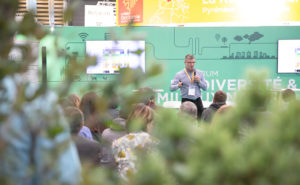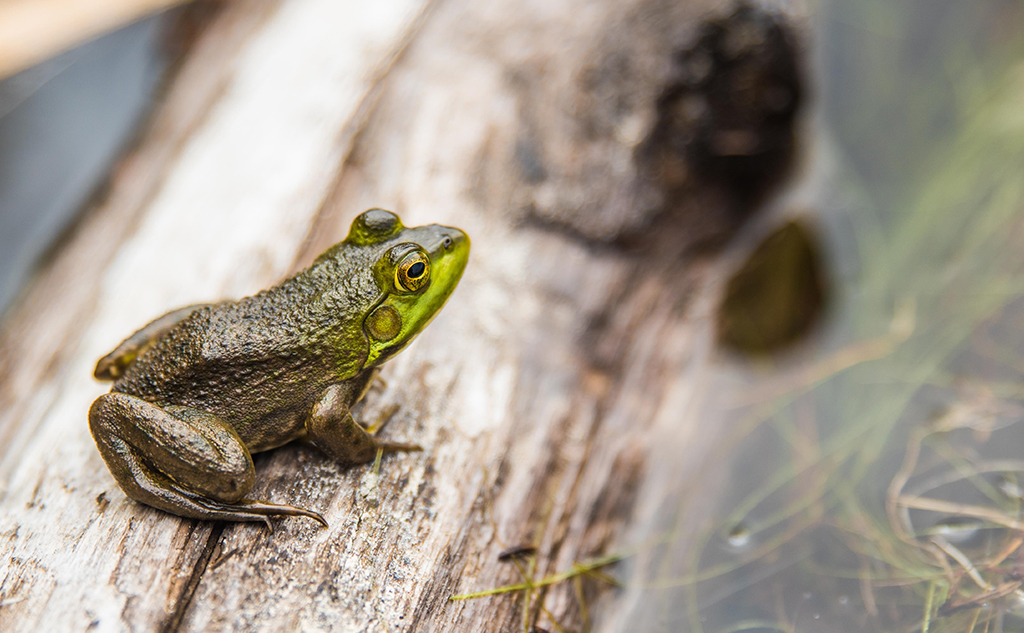The International Union for Conservation of Nature (IUCN) has been assessing the overall conservation status of plant and animal species worldwide for more than 50 years. The IUCN Red List shows that one in four species of mammal, more than one in three amphibians and more than one in eight birds are now threatened with extinction on a global scale. The same goes for almost a third of sharks and rays, a third of reef corals and more than one in three conifer species.
Biodiversity at the heart of industrial strategy
Biodiversity has perhaps long been considered the exclusive domain of nature-loving ecologists and so somewhat removed from the concerns of Pollutec visitors. However, biodiversity has increasingly become an important issue within business and industrial circles, as people become more aware of the fragile balance of our ecosystems and how we interact with them. This new-found view of nature has inspired new technological approaches, harnessing the power of biodiversity in all its forms. It is therefore hardly surprising that Pollutec should have embraced this topic – first in the 1990s with the new section dedicated to landscape and environment management and remediation, then in the early 2000s by including the basics of coastal protection and combating marine pollution. In 2008, the exhibition partner Orée presented its guide on Including biodiversity in business strategies which has since become a reference on the subject. Then in 2010, the International Year of Biodiversity, a step change was heralded by a major symposium on the links between biodiversity and business, organised by the French Ministry for Ecological Transition, which created a new category – Biodiversity & Business – in the Pollutec Business and Environment Awards (PEE). The first prize was awarded to Egis for ‘Eco-Cavalier’, a concrete ballasting system for underwater pipes, providing artificial habitats for marine life.
In 2011, Pollutec confirmed the trend by incorporating the first Ecological Engineering and Biodiversity village. This was the year when France defined its national biodiversity strategy and ecological engineering was recognised as a strategic sector within the green economy. The village has continued since with the support of the French Ecological Engineering Association (UPGE), founded in 2008, and brings together stakeholders and solutions, improving our knowledge of the many aspects of phyto-purification and phytoremediation (e.g. Aquaterra, Aquatiris, Nymphea, Sint, Phytorestore), ecological continuity, restoring ecosystems, combating erosion and even agroecology and bio-monitoring. The range of topics grows year on year.

Bioindication as early as 1996
There have been some remarkable innovations in biodiversity monitoring, beginning in 1996 with Gymnotox, a biological water quality monitoring system relying on a small black fish. Bionef followed in 2008 with an innovation centred on luminescent bacteria and then in 2009 with a toximeter using Daphnia (water fleas). Then came soil monitoring solutions, with Elisol Environnement in 2012 and Methrizlab in 2016, the first offering a methodology for studying soil nematodes (microscopic organisms that feed on roots) and the second, RHIZOtest, a new tool for measuring the transfer of pollutants from soil to plant. Not forgetting the bioindicator bees promoted by Apilab in 2011, an approach also offered by Beeodiversity.
Innovative urban revegetation
Urban revegetation tools (green walls and roofing) have been shown at Pollutec by a number of companies, including Colas (Smac), Siplast, Soprema and Ecovegetal. Some made a strong impact, such as Greenwall which in 2006 exhibited a sphagnum green wall designed with Cirad.
Two years later, Sinnoveg caused a stir with a vegetal noise-reduction barrier made of tree trunks planted in the ground and bonded together by self-grafting. Then Biotop drew the crowds in 2013 with Melting Pot, a 100% recycled green roof solution using coffee sacks as a base with an underlayer of mussel shells, coffee grounds, wood fibre and crushed brick.
AND WHAT ABOUT THE INNOVATIONS OF POLLUTEC 2018?
Beeodiversity: Control of the environment by domestic or wild bees
Qista: A new step in the solution against Tiger mosquitoes
CT2MC: The range of Spyboat aquatic drones widens
Reizhan: Territorial and bio-inspired CRS method
Uption SARL: Powder hand cleaner enriched with probiotics and 100% natural ingredients
Betic Ingénieurs-Conseils: Heat exchanger system with a domestic hot water production




